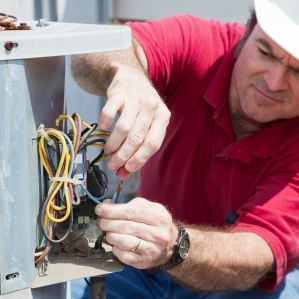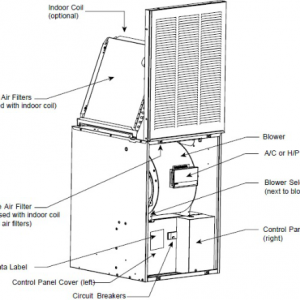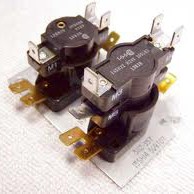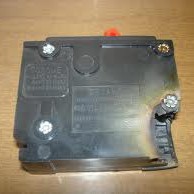 Did you know that the failure of a $ 25 part on your heating system can result in many thousands ($$$$$) of dollars in damage? How you can prevent this from happening to your home!
Did you know that the failure of a $ 25 part on your heating system can result in many thousands ($$$$$) of dollars in damage? How you can prevent this from happening to your home!
Most, if not all, heating systems with blowers and heating coils utilize a special relay switch known as a “sequencer”.An electric furnace sequencer is a device that turns one or more heating elements on and off in a staged fashion. This is necessary to limit the electric current spike that occurs when an electrical device is energized. If all the elements in a furnace were energized at the same time, the current surge would probably cause the circuit breaker to trip or the fuse to blow.
 Many systems use multiple sequencers to perform various functions. The typical system will have several sequencers to first turn on multiple heating elements in a staged interval fashion. Another sequencer will also then operate to turn on the blower motor after the heating elements are energized so that warm air instead of cold air is distributed from the supply registers.
Many systems use multiple sequencers to perform various functions. The typical system will have several sequencers to first turn on multiple heating elements in a staged interval fashion. Another sequencer will also then operate to turn on the blower motor after the heating elements are energized so that warm air instead of cold air is distributed from the supply registers.
Symptoms of a faulty sequencer could include when the blower fan comes on with little or no heat. There could also be situations where the heating elements are stuck on and the blower is not working. Worst case scenario is if all of the heating elements and blower come on at the same time due to a defective sequencer, then the circuit is overloaded from the surge and it either trips the breaker or blows a fuse. If any of the above events occur, there is very little or no heat being supplied to the home.
 In discussions with a qualified HVAC contractor in our area, he indicated that he is frequently replacing sequencers on many furnaces. These components are under significant stress caused by the huge electrical loads they handle. Sequencers or contactors are usually the first components to fail even in properly maintained systems. Because the internal contacts are concealed, it is difficult to identify and predict the failure time-frame. In some cases you could have both a heating element as well as your cooling system operating simultaneously which is not very efficient.
In discussions with a qualified HVAC contractor in our area, he indicated that he is frequently replacing sequencers on many furnaces. These components are under significant stress caused by the huge electrical loads they handle. Sequencers or contactors are usually the first components to fail even in properly maintained systems. Because the internal contacts are concealed, it is difficult to identify and predict the failure time-frame. In some cases you could have both a heating element as well as your cooling system operating simultaneously which is not very efficient.
Vacant homes are especially susceptible to significant damage especially if no one is frequently checking the furnace operation and temperatures within the home. Several days of no heat and freezing temperatures can cause water pipes to freeze and crack. There are also other critical components in the furnace system that can fail such as thermostats, transformers, fuse holders, heating coils, limit switches and blower fan motors which also can result in a similar no heat situation.
 Additionally, loose electrical connections supplying power to the furnace can also cause circuit breakers to trip. All electrical connections over time will follow a path toward failure. If not found and repaired these failing connections can lead to faults, shorts, burned wires and shutdown of critical equipment. Loose connections also result in a build up of heat from the increased resistance with the potential to cause fires or melt circuit breakers and wires.
Additionally, loose electrical connections supplying power to the furnace can also cause circuit breakers to trip. All electrical connections over time will follow a path toward failure. If not found and repaired these failing connections can lead to faults, shorts, burned wires and shutdown of critical equipment. Loose connections also result in a build up of heat from the increased resistance with the potential to cause fires or melt circuit breakers and wires.
If you are planning on leaving your home unattended or vacant for weeks or months with the heat functioning, the best course to protect your investment is to have a qualified Home Watch professional periodically checking the furnace system and thermostats for proper operation and temperature control. If loose electrical connections are also causing performance problems , then those should be addressed immediately to prevent arcing, thermal meltdown, and in severe instances, structure fires. For more information please click on this link contact us. It is best to be proactive and protect your investment. This helps to keep your insurance rates lower and saves you the out of pocket insurance deductible expense.

Recent Comments